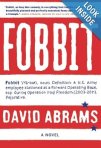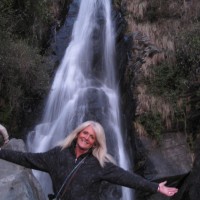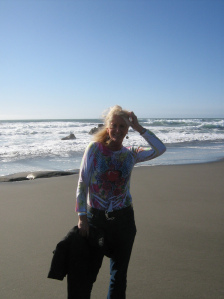(EDITOR’S NOTE: Part One of Why Back Stories Matter appeared on the 366Writing blog. In part two, we look at the specific reasons people love to hear the stories behind the story – and I share a few as well from my newest collection of essays and poetry, Backroad Melodies, which will be released on Summer Solstice, June 21.)
WHEN WRITING BOOKS, authors spend months or even years pulling together backstory. Novelists must know the ins and outs of their characters, and their characters’ lives, loves and tendencies, before committing the first sentence to paper (or screen). Non-fiction authors must track down all available background information on their human subjects or central topics in order to present their material. In both cases, extensive research precedes any writing. It’s quite normal for an author to pore through hundreds of source materials (books, articles, papers, videos, transcripts, etc.) before writing a manuscript.On top of that, fiction writers invariably pull nuggets of experience or perception from their own lives, and weave them into their characters, plots, or subtext.
The final books that reach bookshelves, online stores, and our admiring eyes compare favorably to icebergs: ten percent of the research and raw material makes it into print. Maybe ten percent of that is character, subject or topical backstory woven into the fabric of the narrative.
As for the other ninety percent? Many writers like to entomb their source and research material into cardboard file boxes or backup drives, never to see the light of day again. As for me? I want to know the backstories, and I want to share them. For instance, in my novel Voice Lessons, I wove nearly a hundred personal anecdotes into the characters, events, lyrics, concerts, plot and subtext – not to mention the prose that took flame from research that included more than two hundred books and articles, two hundred CDs and another hundred DVDs. Will you know which anecdotes are from my life? Not unless you know me, well. Or unless I tell you. Behind each anecdote is another story, the agglomeration of experiences that created it. We could go on forever.
Which is the point: to give readers the experiences that shaped the wonderful experience they just had in reading a book. That’s why fan clubs exist. That’s why we comb through materials in all shapes and forms to find interviews, histories, biographies and reminiscences that add context, shape and perspective to what we just read. When we learn these back or side stories, lights switch on in our heads. Recognition parts our consciousness like Moses finding his groove on the Red Sea. “A-ha!” moments of realization break into smiles across our faces, accompanied by a warm, tingling feeling inside. Suddenly, we know more about what makes the author tick, what prompted him or her to write that passage in that way, or to drop in that particularly amazing detail. We feel good because we know more. Acquired and perceived knowledge always feels good.

 Two of the best novels I’ve read in recent years – which I happened to read back-to-back in Spring 2013 – were Fobbit, by David Abrams, and Beautiful Ruins, by Jess Walter. These two men were among four panelists at a Los Angeles Times Festival of Books discussion entitled, “Fiction at a Sideways Glance.” Well, as this piece might indicate, I’m going to be the moth drawn to any writing forum that looks at the craft from a different angle. Both men were engaging and insightful, their shared experiences delighting the capacity crowd. It so happens, too, that Fobbit and Beautiful Ruins are two of the most talked about novels of 2013.
Two of the best novels I’ve read in recent years – which I happened to read back-to-back in Spring 2013 – were Fobbit, by David Abrams, and Beautiful Ruins, by Jess Walter. These two men were among four panelists at a Los Angeles Times Festival of Books discussion entitled, “Fiction at a Sideways Glance.” Well, as this piece might indicate, I’m going to be the moth drawn to any writing forum that looks at the craft from a different angle. Both men were engaging and insightful, their shared experiences delighting the capacity crowd. It so happens, too, that Fobbit and Beautiful Ruins are two of the most talked about novels of 2013.
Each book offers a fiesta for backstory seekers: Fobbit draws from a journal Abrams kept while serving as a public affairs specialist in Iraq, thus offering both a comedic (sometimes hilarious) look at the war and a troubling, in-the-trenches perspective we saw or read about nightly during Vietnam – the tragedy and heartache that happens before medals are pinned on our great servicemen and women – but which was expunged from our awareness by the 21st century Pentagon. Dark comedy? Fobbit is one of the best. You won’t think the same about the war in Iraq, or war itself, after reading it. (We will have the pleasure of hearing from Abrams later this month in a Word Journeys Blog interview).
Beautiful Ruins is an exquisite story of a romantic spark between two people that stretches across fifty years of life, in all its ups and downs, set against three backdrops that the author painted with a combination of personal observation, experience and research: the early production Italian set of the epic Cleopatra (or, to be more specific, what went on between Liz and Dick); a tiny hamlet with Italy’s majestic Cinqueterre coast; and the playground of golden dreams and brass-knuckle realities known as Hollywood.
I am a glutton for good stories, and all great books are loaded with creation points that spider outward as far as you can follow. They are all truly silken threads.
BACK TO THE BACKROADS. The roads listed earlier anchor the overall backstory of Backroad Melodies. Many of the poems were written about or on them. Since I’ve opened a can of worms, and encouraged everyone to either seek out or share the stories behind the stories, here are a few from this collection:
• “A Day on the Rake”: I took a day of silence during a long meditation retreat in Northern California (on MacNab Cypress Road), grabbed a rake, and spent an entire day working on a mile of paths that wound between hundreds of plant species and statues of deities representing all the world’s major religions. Truly energizing.
• “Birthing a New Day”: An experience from the inception of my relationship with Martha, at the base of Mount Palomar, in her backyard on Ushla Way, twenty miles from the nearest town. Years later, I can gladly report that very day feels like this poem.
• “Fossil Light”: Standing outside on a crystal clear midnight in February, temperature three degrees above zero, viewing the stars through the prism of their original conception. What we see twinkling today is the way they existed before modern civilization, before humanity … even before dinosaurs. Fossil light.
• “The Way Stones Tell Stories”: Sitting in the San Luis Rey riverbed during dry season, holding a stone, admiring its age and stoic presence. Every sentient being has its storytelling style; our job is to know how to listen, and what to listen for.
• “Morning Prayer”: Driving through Capitol Reef in Eastern Utah just as dawn erupted on the cliffs, canyons, domes and bridges of this monocline, known to geologists as the Waterpocket Fold. I feel Native American spirit and energy most profoundly in the Four Corners region … as on this morning.
• “Ghost Riding”: This could be subtitled, “the songs of trees on back roads.” When wires, lights and busy minds aren’t present, wind feels and sounds like ghosts while whispering through trees.
• “Tea Time”: Over a three-year period, I had the profound pleasure of walking next door occasionally and drinking tea with my friend and favorite poet, Gary Snyder. Few people are more conversant on so many different topics.
• “Four Pool Quartet”: On a hot, late September day in the Sierra Nevada foothills, one of my students asked if we could hold an outdoor class. You don’t have to ask me that question twice. We loaded up cars, and I took them to an out-of-the-way spot on the Yuba River, reachable only by driving a road you don’t want to think about in icy or snowy weather, then hiking down a trail steep enough to tax a bighorn sheep. We sat on giant flatrock, deposited when the Sierra Nevada range was formed five million years ago, and wrote and swam for two hours. (“Did you know this snow-fed, rock-strewn river has five or six different currents,” I told them, “only three of which you see above the surface?”) This poem was one of my two contributions for the day, written behind a back road, while sitting in a river pool.









